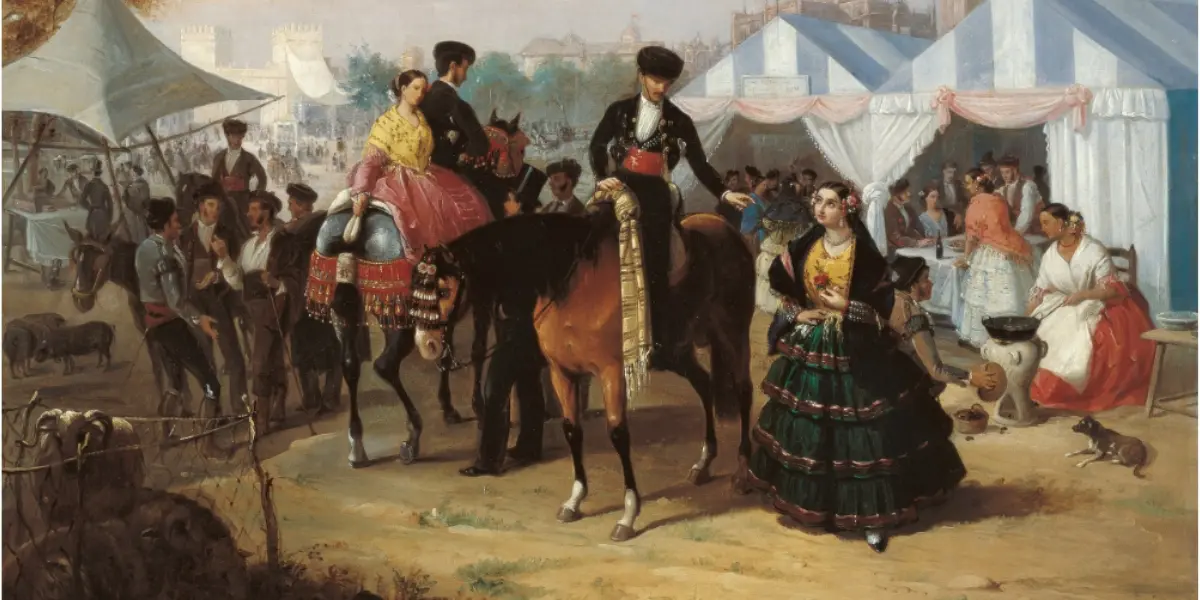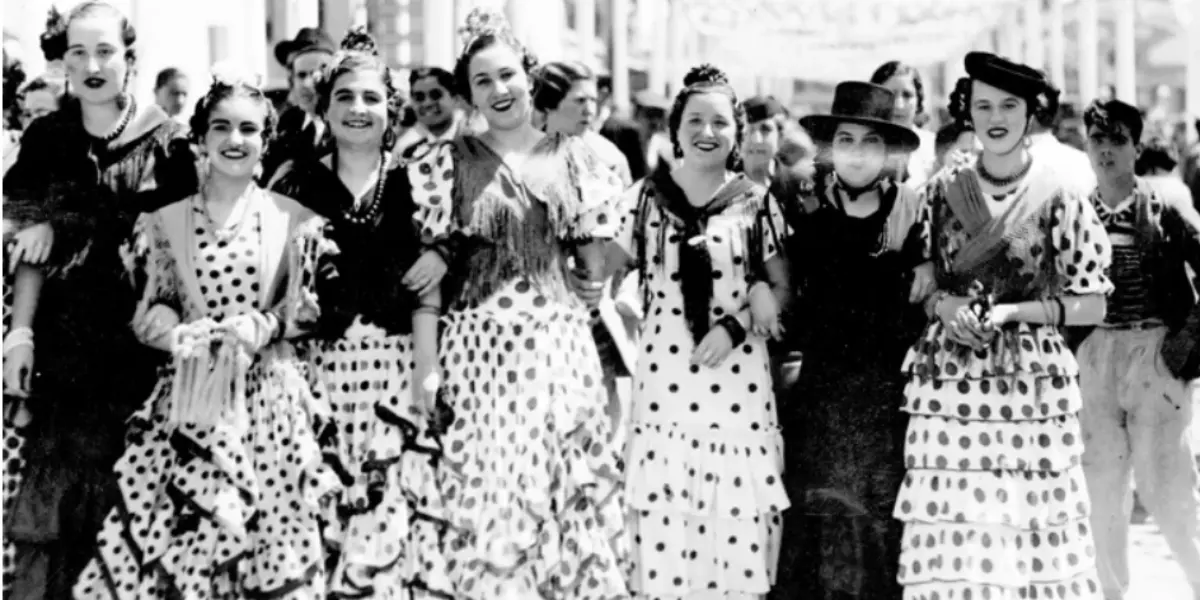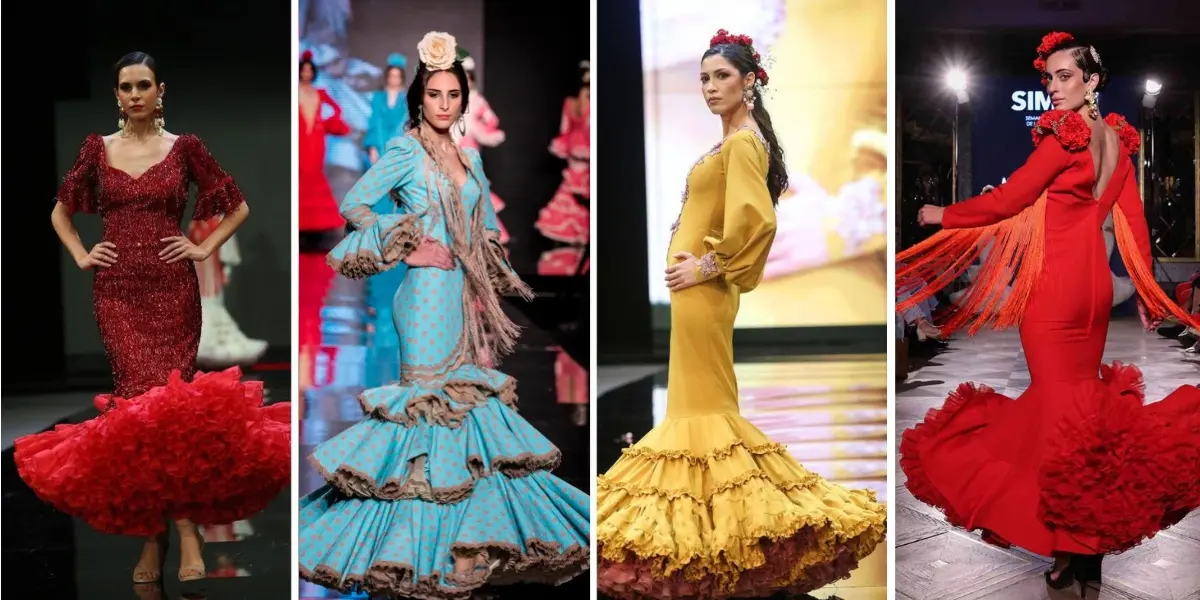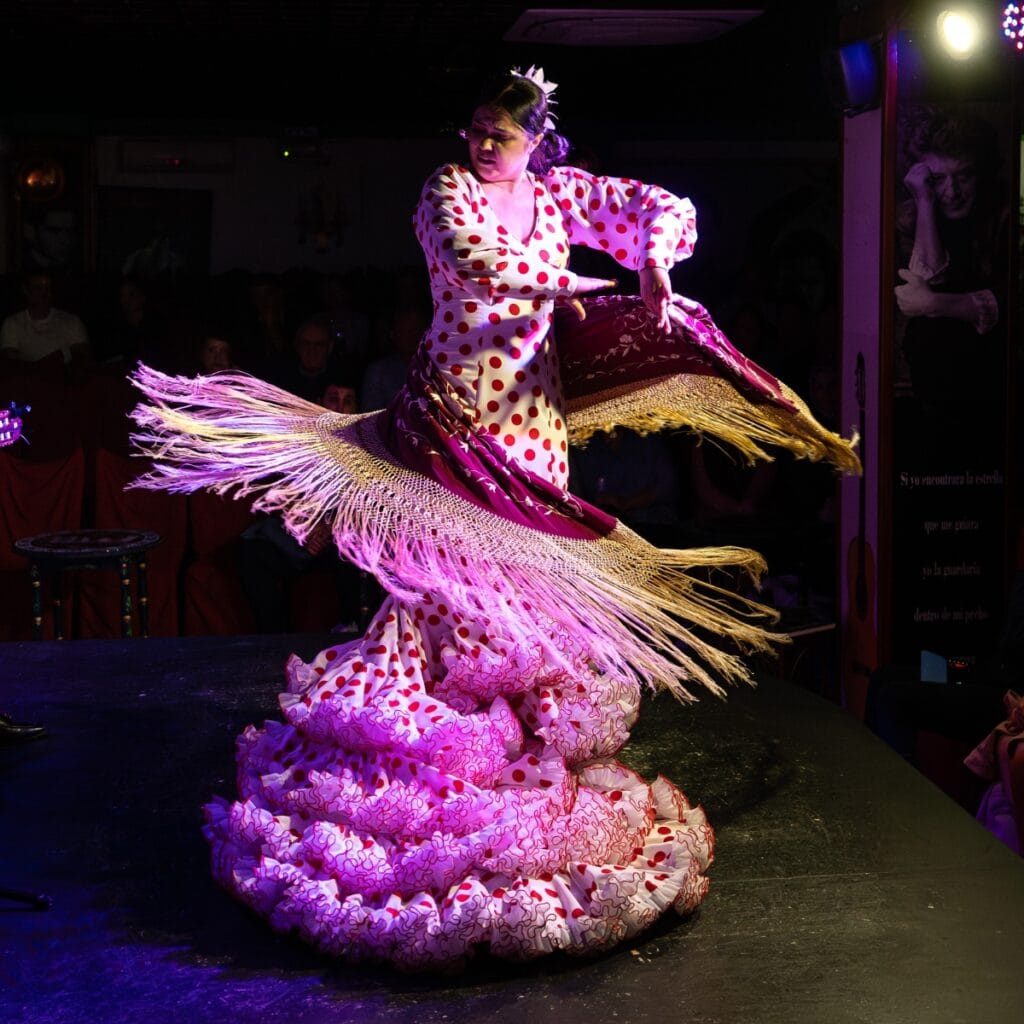When we think of flamenco, possibly the first thing that comes to mind is a woman in a dress with ruffles and polka dots, the typical gypsy dress. Possibly, this dress is an icon of Andalusia, even of Spain.
Learning about the history of the gypsy dress is very interesting as it allows us to delve deeper into our cultural roots.
The gypsy dress has very humble origins linked to the Andalusian rural environment, but today, it has become a fashion accessory of high symbolic value, with great international prestige and present in the most prestigious fashion runways.
Do you want to know more about the history of the flamenco dress?
A Humble Origin Linked to Livestock Fairs
The Peasant Women’s Dresses
We can say that the origin of the gypsy dress dates back to the dresses worn by Andalusian peasant women of gypsy ethnicity, back in the 19th century. These women accompanied their husbands to fairs wearing peculiar percale dresses with ruffles.
They were very comfortable garments, the ruffles allowed freedom of movement and were made of fresh fabrics, designed to carry out field work and withstand long days in the sun.

The Inclusion of Polka Dots
The polka dots, so typical in these dresses, have a very peculiar origin. In the 18th century, a printing error in a textile factory caused the fabrics to be marked with circles.
These fabrics, considered defective, were sold at low cost and bought by the humblest classes, including gypsies, using these fabrics in the making of their dresses.
The Influence of High Society
From the Countryside to the most Glamorous Salons
The popularity of this dress increased as livestock fairs also grew in popularity.
Women of high social class copied the style of the gypsies but added to their attire some embroidery, accessories such as necklaces, earrings or lace, transforming the peasant dress into a gala dress.
The Seville Exhibition in 1929
In 1929, a fair called the Ibero-American Exhibition was held in Seville, where one of the protagonists was the gypsy dress.
The dress was so successful that it became an icon of Andalusian and Spanish culture, being used in fairs and official events.
From the Fair to the Stage
Initially, this dress was not part of the flamenco dancers’ attire. But of course, the gypsy women already wore this type of dress, and when they danced or performed, they wore it, so it began to be associated with performance. The dress became synonymous with flamenco, especially after the aforementioned Seville fair in 1929.
Evolution of Design and Fashion
Modifications throughout the 20th Century
The flamenco dress has undergone various modifications over the years, just like many other garments.

In the 1960s and 1970s, the skirts were made shorter and with more ruffles to make them more voluminous.
In the 80s and 90s, the dresses had longer skirts and were more fitted.
Contemporary Flamenco Fashion
Currently, we can say that the gypsy dress is the only regional costume that evolves every year with fashion.
Its design is not as static as other “regional uniforms” although it always preserves its essence and certain details that make it distinctive. Every year, designers present their new collections at various events, such as the International Flamenco Fashion Show (SIMOF).

Here, models wear dresses from different designers, and you can see dresses with different cuts, fabrics, colors, and patterns.
Industry with Great Economic Impact
The flamenco fashion industry is very important in Andalusia. There are multiple companies specialized in the making of flamenco dresses and accessories.
It is a growing industry that generates employment and also promotes Andalusian culture both nationally and internationally.
The Gypsy Dress on an International Level
Gypsy dresses are authentic handcrafted creations and have high symbolic value. Many people internationally acquire these dresses for their aesthetics and beauty, but possibly also because they connect them with the culture and art of Spain.
The gypsy dress is not just a beautiful outfit, it is an emblematic symbol of the history of Andalusia.
From its humble origins to being part of major fashion runways, this dress has evolved over time, adapting to trends without losing its charm.

